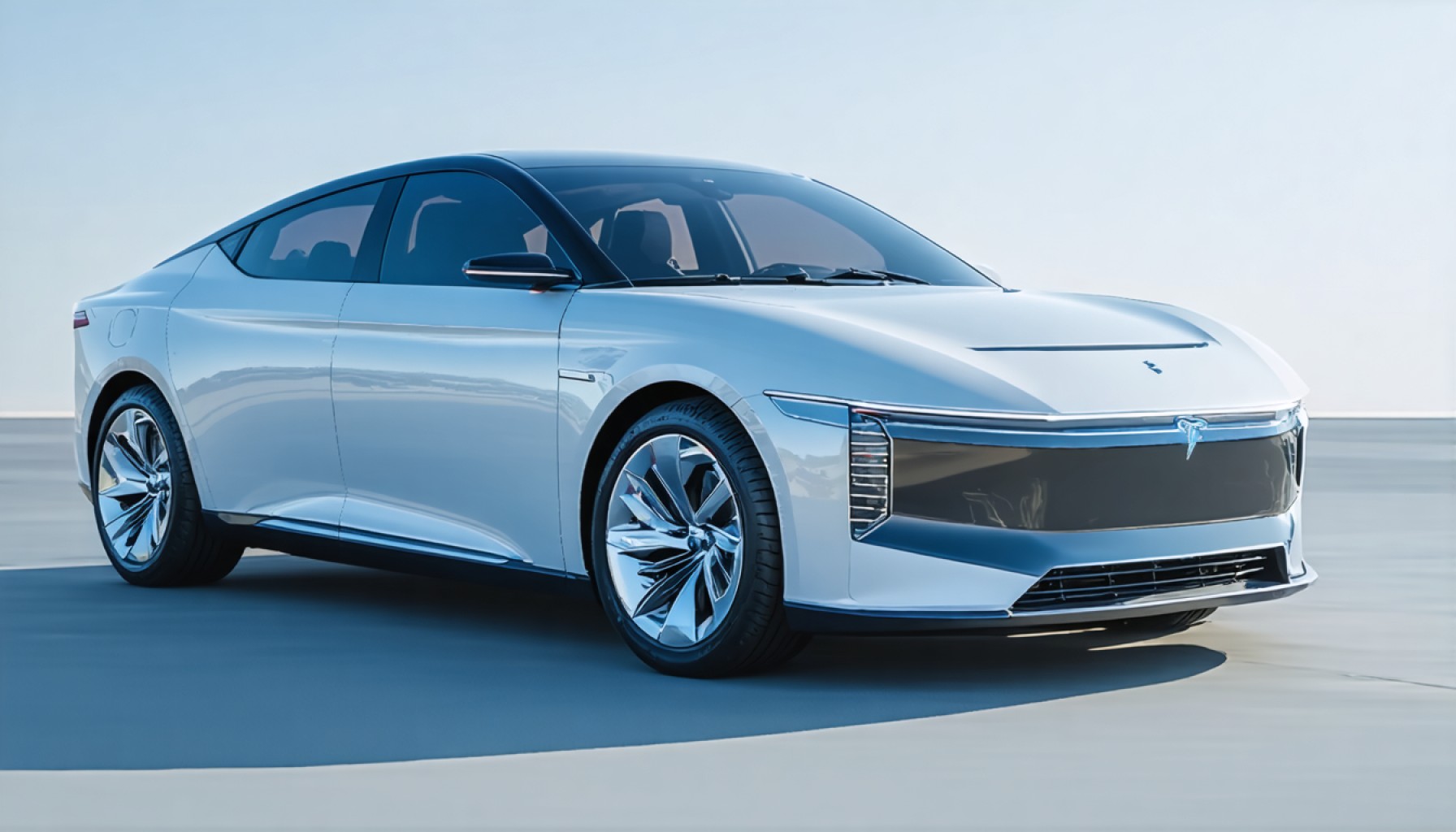
- BYD is emerging as a strong competitor in the electric vehicle (EV) landscape, surpassing Tesla in passenger Battery Electric Vehicle (BEV) sales for two consecutive quarters.
- BYD’s innovative 1,000-kW ultra-fast charging technology and advanced 10C charging rate batteries are setting new industry standards, challenging Tesla’s Supercharger network.
- While Tesla faces challenges such as CEO Elon Musk’s political stances and geopolitical tensions impacting its supply chain, BYD benefits from favorable domestic policies and strategic growth.
- BYD’s first-quarter sales of 416,388 passenger BEVs reflect a significant 38.74% year-on-year growth, showcasing its technological and strategic advantages.
- Tesla’s delivery numbers have decreased to 336,681 units, highlighting the company’s need for recalibration amidst competitive and ecosystem challenges.
- By 2025, the competition for global BEV leadership remains intense, with both BYD and Tesla striving to lead through innovation and perseverance.
Beneath the ever-changing skyline of the automotive landscape, a new frontrunner emerges; BYD is barreling down the highway of electric vehicle innovation, its headlights firmly set on overtaking the industry titan, Tesla. Once a whisper on the global stage, BYD is now roaring through the ranks, driven by a potent mix of groundbreaking technology and strategic foresight.
In the electrifying dance for market supremacy, BYD’s sales of passenger Battery Electric Vehicles (BEVs) have surpassed Tesla’s for two consecutive quarters. This surge speaks volumes, not only of BYD’s robust strategy but of the shifting currents in consumer preference and technological advancement.
BYD, fueled by its relentless innovation and vertically integrated production line, is setting new industry standards. The company’s 1,000-kW ultra-fast charging technology and cutting-edge 10C charging rate batteries leapfrog even Tesla’s formidable Supercharger network. These advancements are more than mere bells and whistles; they are the heartbeat of a carmaker ready to redefine the industry’s rhythm.
While Tesla’s name echoes in the hallways of automotive greatness, it faces a cacophony of challenges. With CEO Elon Musk’s controversial political stances polarizing customers in key Western markets, Tesla’s sales are at risk of softening, according to recent forecasts. Moreover, geopolitical tensions, including rising tariffs and trade disputes, are gnawing at the edges of Tesla’s supply chain, potentially destabilizing its market position.
In a sphere where timing is everything, BYD is poised to capitalize on this unfolding drama. The company benefits from a powerful tailwind—allied by strong domestic policies that favor its expansive growth. While Tesla grapples with geopolitical and market hurdles, BYD races ahead, its eyes on the prize of turning predictions into reality by leading global BEV sales by 2025.
The numbers paint a compelling picture. In the first quarter of this year, BYD sold 416,388 passenger BEVs, marking an impressive 38.74 percent year-on-year growth. This performance is backed by strategic foresight and technological prowess and heralds the dawn of a new chapter in the global automotive saga.
For Tesla, whose deliveries dropped to 336,681 units in the same period, the narrative is not one of demise but of recalibration. Battling not just against competitors but the constraints of its current ecosystem, Tesla’s journey remains a hallowed saga of innovation, albeit one facing growing pains.
As we glance into the crystal ball of 2025 and beyond, the takeaway is clear: the race is far from over, and the route to global BEV leadership is a dynamic terrain. For BYD, the future gleams with promise, while Tesla remains a formidable contender. To win in this electric arena, both will need to harness the voltage of innovation and perseverance. The real battle sparkles not just in numbers, but in who leads the charge into the new era of electric mobility.
Is BYD Set to Surpass Tesla in the Electric Vehicle Race?
Overview of the Electric Vehicle Landscape
The landscape of the electric vehicle (EV) market is rapidly shifting, with BYD emerging as a formidable competitor against Tesla. With consecutive quarters outperforming Tesla in sales of passenger Battery Electric Vehicles (BEVs), BYD is making headlines with its technological innovations and strategic market maneuvers.
Technological Innovations at BYD
BYD’s advancements are not just incremental—they are revolutionary. With a 1,000-kW ultra-fast charging technology, BYD is setting the bar for what consumers can expect from EV infrastructure. Their 10C charging rate batteries allow for quicker recharges, potentially displacing Tesla’s dominance in charging networks. This advancement boosts consumer confidence in the practicality of EVs for long-distance travel.
Expert Insights: According to energy experts, faster charging capabilities can significantly accelerate EV adoption rates (Cleantechnica).
Comparative Challenges: Tesla vs. BYD
Tesla isn’t vanishing from the electric mobility scene anytime soon. However, it faces complex challenges that demand strategic recalibration. CEO Elon Musk’s controversial political activities could potentially alienate a segment of Tesla’s market base in Western countries, potentially leading to softened sales. Moreover, geopolitical tensions threaten Tesla’s supply chain, increasing operational risks.
In contrast, BYD benefits significantly from the supportive domestic policies in China, which have favored expansive growth and technological research. These policies allow BYD to continuously innovate and dominate its domestic and potentially global market.
Real-World Use Cases and Market Implications
1. Consumer Preferences: The shift in consumer preference towards brands offering faster charging and innovative technologies positions BYD to cater to a new wave of eco-conscious drivers.
2. Policy Influence: Domestic policies in China offer strong incentives for clean energy vehicles, paving a path for BYD to extend its market share further beyond its current reaches.
3. Global Market Impact: The BEV race to 2025 could see BYD potentially lead globally in sales figures, turning industry predictions into reality.
Market Forecast: Estimates predict BYD’s market influence growing, with the potential to lead the global BEV sales by 2025, should current trends continue (Forbes).
Actionable Recommendations for EV Enthusiasts
1. Stay Informed: Keep an eye on market leader shifts in the EV space to make informed purchasing decisions. For the latest insights into electric vehicles, check out BYD or Tesla.
2. Evaluate Charging Infrastructure: As charging technology advances, consider which EVs offer the most practical and rapid charging options.
3. Monitor Policy Changes: Policies can dramatically affect EV affordability and availability, especially in regions like the EU and North America, where regulatory support is building for sustainable transport.
Life Hack: Take advantage of government incentives when available to lower the initial cost of purchasing an EV.
Conclusion
The race for BEV supremacy between BYD and Tesla is a dynamic spectacle charged with technological innovation and market strategy. As both companies strive for the lead, success hinges on addressing consumer needs, geopolitical challenges, and leveraging technological breakthroughs.
Final Thoughts
Whether you’re an EV enthusiast or investor, keeping abreast of these developments is crucial as the market accelerates toward a more sustainable future. As we look to 2025 and beyond, the electric vehicle market will likely see further tectonic shifts that could redefine global transportation.



